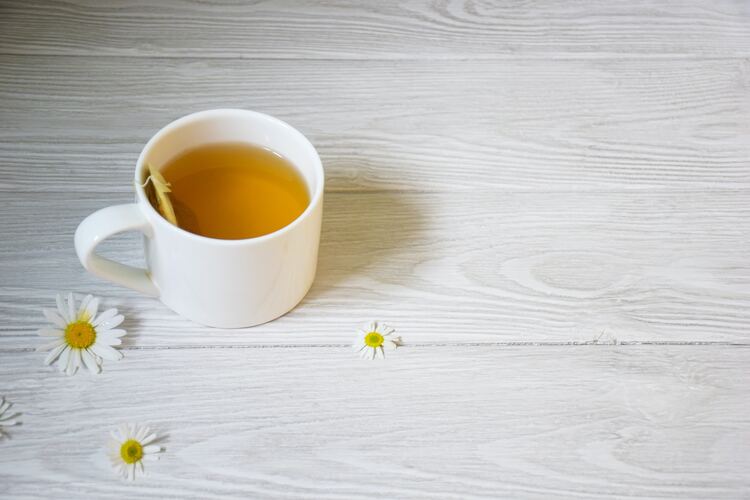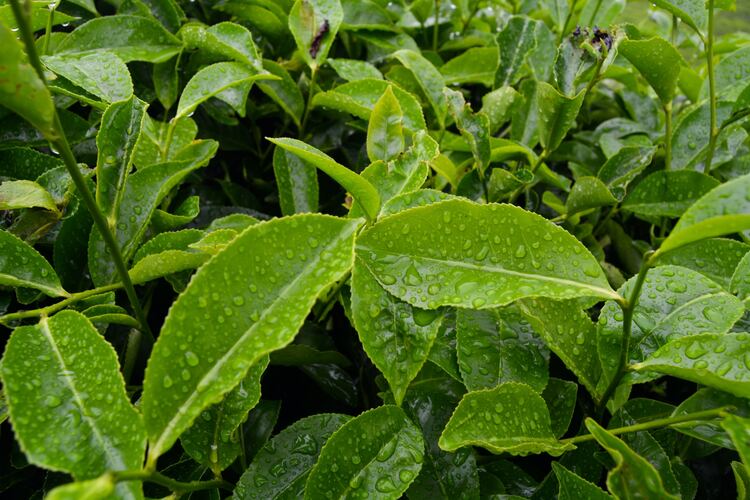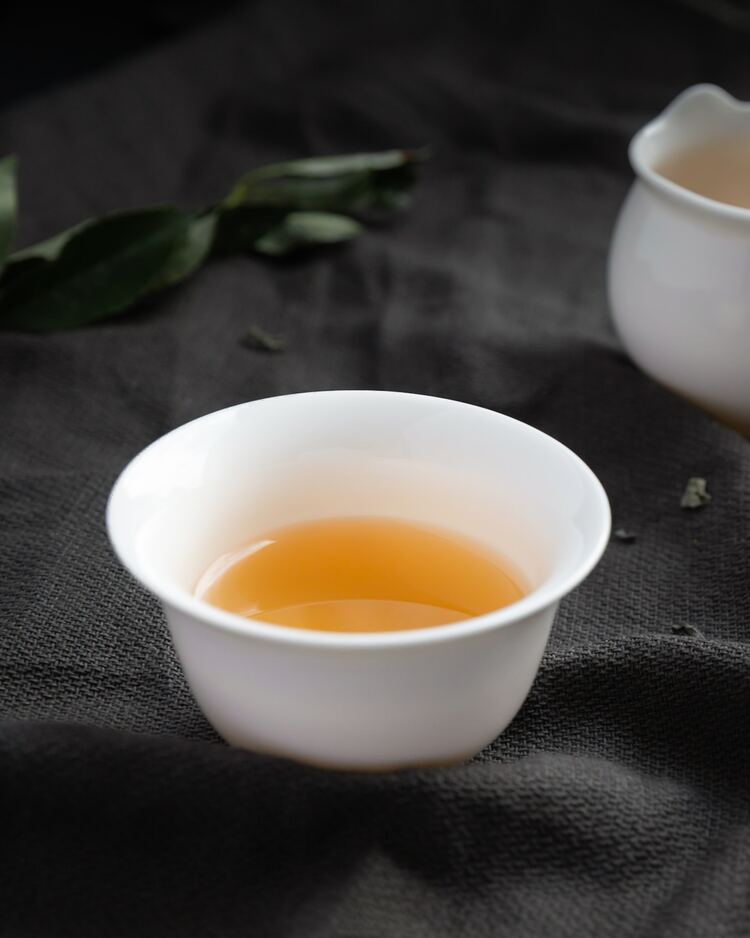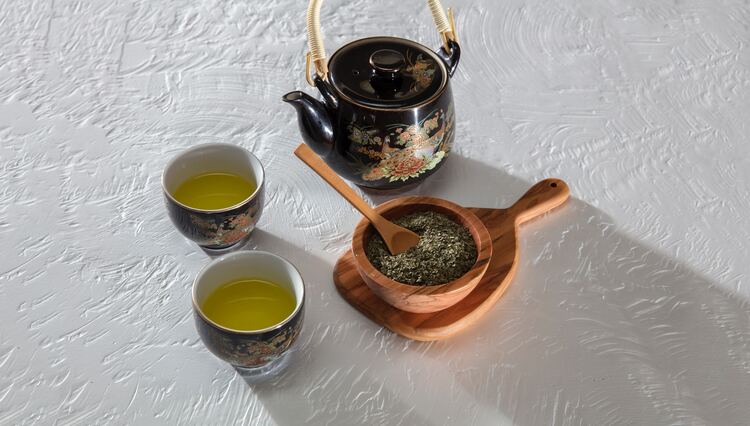What is Sencha Tea (or Sencha Green Tea)?
Sencha tea is a popular type of Japanese green tea, known for its refreshing flavor and impressive health benefits. As green tea enthusiasts, we appreciate the delicate balance of flavors that make this tea a standout choice for many tea drinkers, as well as its unique production process.
Grown under full sunlight, tea leaves are carefully harvested during the first and second flushes of the growing season. This results in leaves that are vibrant, flavorful, and packed with nutrients. The leaves are then steamed, rolled, and dried, which preserves their beautiful green color and helps prevent oxidation, maintaining the tea’s freshness and taste.
As we explore the world of this tea, we’ll explore its history, various grades and types, and health benefits. So, join us as we share our love for this delightful tea and all it offers.
Please note: This article contains affiliate links, meaning I may earn a commission if you make a purchase by clicking a link. Of course, this comes at no extra cost to you and helps me to keep offering solid information to readers.

What is Sencha Tea? History and Origins
Sencha is a type of Japanese green tea that is traditionally produced through a specific method of processing tea leaves. It’s one of the most popular and widely consumed green teas in Japan and worldwide.
We can trace the origin of this tea back to 17th-century Japan. This type of tea is an offspring of the Chinese production method used to create steamed green tea. It was in the early Edo period that a highly regarded tea master named Ingen Ryūki introduced the tea style, which he developed after witnessing tea-steaming processes in China.
In contrast to matcha, another popular Japanese tea type, sencha uses younger leaves and does not undergo a grinding process. Because of this, we can enjoy a more robust flavor profile and a vivid green color.
The production of this tea grew remarkably during the 18th century when most Japanese tea farmers began to shift their focus from shade-grown matcha tea plants to sun-grown sencha tea plants. The popularity of this tea skyrocketed, as it provided a more affordable and accessible option for many people.

Cultivation and Production Process
Sencha tea comes from the Camellia sinensis plant. The cultivation and production process of this tea is quite interesting, as it involves several steps to bring out its unique flavor and aroma.
Harvesting and Steaming
First, the tea leaves are carefully handpicked during the first flush, which occurs from late April to May. This is when the young leaves are tender and flavorful, perfect for high-quality sencha tea.
Next, the freshly harvested leaves are steamed to prevent oxidation (darkening of the leaves), thus preserving their beautiful green color and fresh taste. The steaming process typically lasts for 30 to 45 seconds. The steaming level can vary depending on the desired flavor profile; lighter steaming produces a sweeter tea, while deeper steaming produces a more robust, grassy flavor.
Rolling and Drying
After steaming, the leaves undergo a rolling process. The tea leaves are rolled and shaped using specialized machines. This helps break down the cell walls of the tea leaves, releasing their essential oils.
During the drying process, the rolled leaves are gently dried to reduce their moisture content. At this stage, the leaves are transformed into their final needle-like shape, characteristic of sencha tea.
Once the leaves are dried, they’re sorted by grade and stored in a cool, dark place until they are packaged and sold.

How to Brew Sencha Tea
In this section, we will guide you through the process of brewing a perfect cup of tea.
Choosing Quality Sencha
Firstly, to enjoy the best tea experience, it is essential to choose high-quality leaves. Look for Sencha tea with a vibrant green color and small, needle-shaped leaves. Purchase your tea leaves from a reputable vendor to ensure their freshness and quality.
Water Temperature
Water temperature is essential in extracting the best flavor from Sencha tea leaves. The ideal water temperature for brewing Sencha tea is around 160-170°F (70-80°C). Using boiling water can result in a bitter taste, while lower temperatures may not extract the full flavor from the leaves.
Steeping Time
Steeping time is crucial to achieve the right flavor balance for Sencha tea. We recommend steeping the tea for 1-2 minutes. A shorter steeping time will result in a lighter, more delicate flavor, while a longer steeping time may make the tea taste overly strong and bitter.
Now, let’s put all of these elements together and brew a great cup of tea:
- Place 1 teaspoon of high-quality tea leaves into a teapot.
- Pour 1 cup (8 ounces) of 160-170°F (70-80°C) water over the tea leaves.
- Allow the tea to steep for 1-2 minutes, depending on your flavor preference.
- Strain the tea into a cup and enjoy!
With these tips and techniques, we hope you can fully experience and appreciate the unique and wonderful flavor of Sencha tea.

Sencha Tea vs. Other Green Teas
I think it is interesting to compare Sencha with other green tea varieties. Here are some key differences:
Firstly, it’s important to note that sencha tea is produced from the Camellia sinensis plant, like all other green teas. However, the processing methods and cultivation techniques used set it apart from its counterparts.
The most distinct feature of Sencha tea is that it is steamed rather than pan-fired, which is the case with other green teas like Chinese Dragonwell or Gunpowder tea. Steaming preserves the vibrant green color, fresh taste, and high antioxidant content of this tea.
Now, let’s briefly compare Sencha tea to some specific green teas:
- Gyokuro: Often considered the highest grade of Japanese green tea, Gyokuro is shaded from sunlight for about three weeks before harvest. This increases the levels of chlorophyll and amino acids while reducing the bitterness. Sencha, on the other hand, is grown in full sunlight, leading to a more robust taste.
- Matcha: Matcha tea is made by grinding green tea leaves into a fine powder, and whisking them with hot water. Although both Sencha and Matcha are steamed, the main difference lies in the preparation method and the fact that you consume the entire tea leaf with matcha.
- Genmaicha: This blend of Japanese green tea, usually made with either Sencha or Bancha tea leaves, combined with popped rice kernels. As a result, Genmaicha has a distinct roasted flavor and lower caffeine levels than pure Sencha.
Each green tea variety has its unique flavor profile and health benefits, so we encourage you to explore and find the one that suits your taste preferences best. No matter which green tea you choose, you’ll surely enjoy the delightful experience and numerous health perks they offer.
Sencha Tea Health Benefits
Sencha tea is not only a delightful beverage, but it also offers a variety of health benefits to support our general well-being. In this section, we’ll discuss some key advantages under below.
Antioxidants and Weight Loss
Loaded with potent antioxidants, this tea is a powerhouse when it comes to delivering protective compounds to our body. The high concentration of catechins, particularly epigallocatechin gallate (EGCG), helps neutralize harmful free radicals and reduce oxidative stress.
Moreover, the antioxidants found in this tea may assist our weight management efforts. With its potential to boost metabolism and promote fat oxidation, this delightful tea can be a great ally when trying to burn calories.
Mental Clarity and Energy
Next, let’s talk about how Sencha green tea can enhance our cognitive function and energy levels. The tea contains a moderate amount of caffeine, which is known to improve alertness, focus, and information processing abilities. Additionally, the tea is rich in L-theanine, an amino acid that has been found to promote relaxation and reduce stress without causing drowsiness.
This unique combination of caffeine and L-theanine provides a balanced boost that allows us to experience increased energy and mental clarity without the unwanted jitteriness or crashes commonly associated with other sources of caffeine.
Sencha Green Tea Buying Recommendations
I recommend visiting a tea specialist to get the best quality Sencha tea (that fits your budget). In this way, you will get direct advice on what to buy and you may even be able to get a taste before making a decision.
If you are limited on time, here are some recommendations to start your journey (buy online):
Uji-Kyoto Green Tea leaves Sencha

Organic Japanese Sencha – First Harvest Saemidori Cultivar


Frequently Asked Questions
What is Sencha tea, and where does it come from?
Sencha is a traditional Japanese green tea that is highly regarded for its refreshing taste and numerous health benefits. It originates from Japan, where it is cultivated and processed using specific techniques to create its distinct flavor profile and vibrant green color. The tea leaves used for Sencha are grown in full sunlight, which contributes to their unique characteristics.
How is Sencha tea different from other green teas?
This tea stands out from other green teas due to its production process. The tea leaves are steamed immediately after harvesting to prevent oxidation, preserving the tea’s natural color and nutritional content. After steaming, the leaves are rolled, shaped, and dried to create the final product. This process results in a delicate balance of grassy, sweet, and slightly astringent flavors, setting Sencha apart from other green teas like matcha or gyokuro.
What are the health benefits of drinking Sencha tea?
Sencha tea is rich in antioxidants, particularly catechins, which are known for their potential health-promoting properties. These antioxidants help combat oxidative stress in the body, which can contribute to various chronic diseases. Drinking Sencha tea is believed to support a healthy metabolism, aid in weight management, promote cardiovascular health, and potentially even reduce the risk of certain types of cancers.
Can Sencha tea be enjoyed cold or in different recipes?
Yes, this tea is versatile and can be enjoyed in various ways. One popular option is to brew it as cold-brew tea by steeping the leaves in cold water in the refrigerator for several hours. Sencha’s refreshing taste makes it a great base for iced teas, and you can add sweeteners, citrus, or herbs to enhance the flavor. Additionally, Sencha tea can be used in culinary creations, such as incorporating it into desserts, marinades, or even savory dishes for a unique twist on traditional recipes.
Wow! I love writing these articles where we go deep into the tea production process. Can you tell I am a total nerd? Well, I hope you have enjoyed the article as much as me. Let me know your thoughts about this type of tea and Japanese green teas in general.
Have you ever asked yourself what is sencha tea? Have you heard about this green tea variety before?